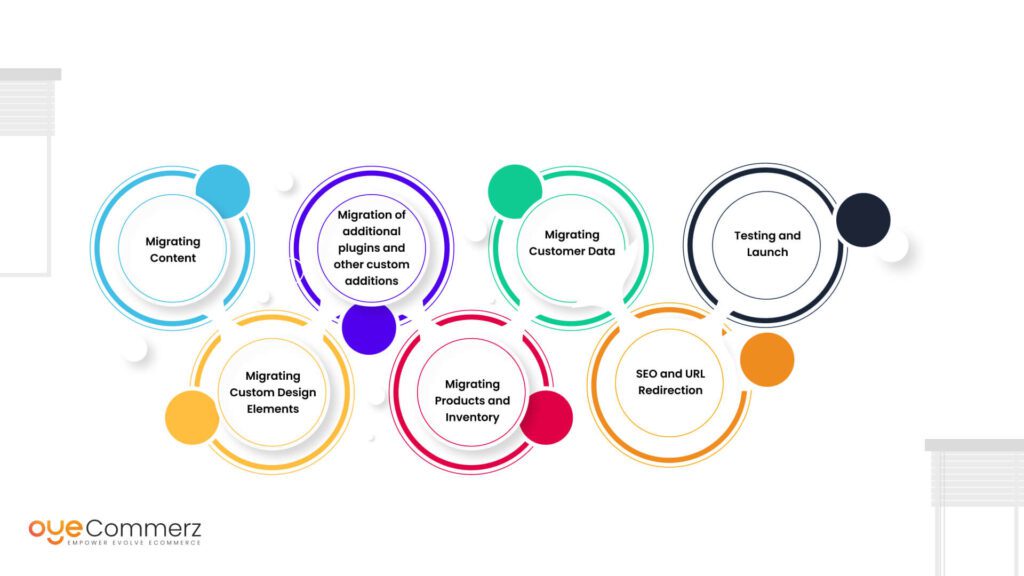Transitioning from WordPress to Shopify marks an promising step in optimizing your online store operations. As companies expand, choosing a platform that supports growth potential, user experience, and customization is essential. Shopify has emerged as a preferred choice for e-commerce professionals, providing unmatched flexibility, security, and user-friendliness. In this guide, we will delve into the transformative impact of this migration, discuss the advantages, and provide actionable steps to facilitate a smooth transition.
1. Why Migrate from WP to Shopify?
WordPress, paired with WooCommerce, continues to support countless online stores. However, as businesses expand, issues like reliance on plugins, security vulnerabilities, and technical complexities often obstruct progress. Shopify, designed explicitly for e-commerce, addresses these concerns with an comprehensive, intuitive solution. Real data supports this shift—Shopify hosts over 4.4 million websites worldwide, with a documented 10% increase in sales conversion rates for numerous merchants post-switch.
2. Shopify's Advantages for Thriving Online Stores
Shopify’s powerful platform is tailored for scaling brands. Its standout benefits are:
- Seamless Customization: Shopify offers over 80 expertly crafted themes.
- Integrated Tools: Capabilities such as Shopify Payments and built-in SEO save time and effort.
- Global Reach: Currency versatility and localization features empower brands to expand internationally.
Additionally, Shopify delivers an availability percentage of 99.98%, ensuring your store remains accessible.
3. Preparing for WP to Shopify Migration
Prior to starting the migration process, evaluate your current store. Review inventory details, client information, and SEO performance. Tools like Shopify’s Migration Kit or external tools help ease the transition. Develop a detailed strategy, making sure all assets—item details, media files, and articles—are optimized for transfer.
4. Data Migration: A Critical Step
Data migration forms the foundation for a smooth transition. When moving from WP to Shopify, prioritize:
- Inventory Details: SKU, descriptions, and categories.
- Customer Data: Emails, purchase records, and custom fields.
- Search Engine Considerations: Preserve meta tags, URLs, and redirects to avoid SEO losses.
Use apps like LitExtension to streamline data transfer while reducing mistakes.
5. Customizing Your Shopify Store
Post-migration, personalizing your Shopify store ensures it reflects your business identity. Take advantage of Shopify’s intuitive page builder to design pages effortlessly. Shopify's themes are optimized for all devices, ensuring a seamless user experience across platforms—a critical factor, given 74% of online shopping comes from mobile visitors.
6. How to Protect Your SEO Rankings When Switching Platforms
SEO is vital for preserving your online presence during migration. Shopify is highly optimized for search engines with clean URL structures, preloaded features, and smooth content management. Ensure:
- Implement 301 redirects for existing links.
- Enhance updated content with keyword-rich content.
- Use Shopify's apps Plug in SEO to track analytics post-migration.
7. Essential Tests After Migrating to Shopify
After finishing the transfer, run detailed checks.
Review: - Page load times (Shopify delivers faster speeds in contrast with WP).
- Payment integration reliability and checkout processes.
- Mobile responsiveness.
Quality assurance WordPress e-commerce migration ensures your store provides a smooth shopping journey from day one.
8. Real-Life Success Story
One such migration success story is Gymshark, a sportswear company that moved to Shopify. Post-migration, the company experienced a 60% increase in mobile Advanced Shopify migration sales and significantly lowered site downtime. This showcases the capabilities of Shopify in enhancing e-commerce growth.
9. Overcoming Common Migration Issues
Migration comes with challenges, such as data integrity and adjusting tailored features. However, Shopify’s extensive assistance and third-party experts make overcoming these hurdles manageable. Partnering with experienced Shopify developers ensures a smooth transition.
10. Starting Your Journey with Shopify
Migrating from WP to Shopify represents a strategic decision to e-commerce. By focusing on growth, streamlining operations, and improving buyer satisfaction, Shopify empowers businesses to succeed in challenging industries.
Conclusion
Switching from WP to Shopify is a strategic move that can significantly boost your online business performance. With a robust migration plan, the appropriate resources, and professional guidance, you can unlock new success milestones.
Ready to make the leap? Reach out today to learn how our Shopify migration services can revolutionize your online store. Get in touch today, or consider: Is it time to seize Shopify’s advantages for your store?
